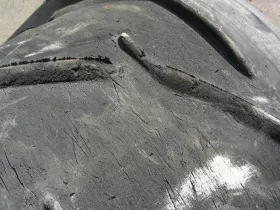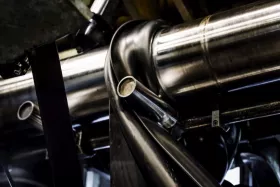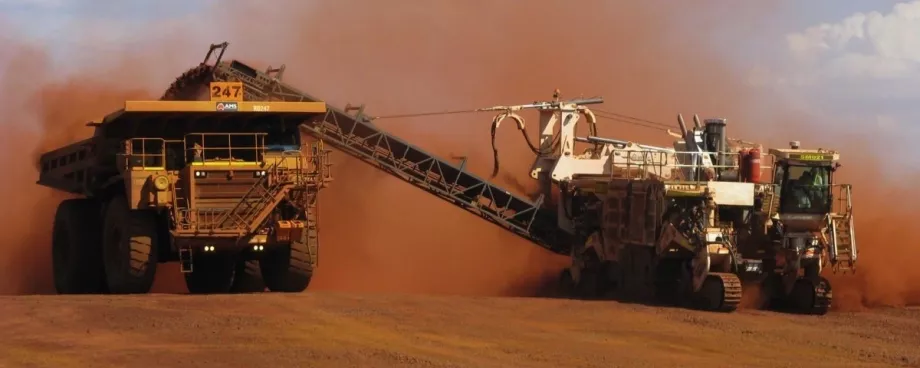Rapid Wear

Having to use a rubber that is sufficiently malleable (pliable) so that it will fill the mould cavities and accept the dynamical strains of belt operation often creates a second major ‘belt life-threatening’ weakness.
Research and experience has shown that the rubber used to make the chevrons in the two-step production process almost invariably has much lower resistance to abrasive wear than would normally be acceptable. It is not unusual, especially among so-called ‘economy’ belts imported from Asia, that even chevrons as high as 25mm or 32mm can wear almost completely flat in a remarkably short time.
Make it once, make it strong
The fact of the matter is that there is only one way to avoid the inherent weaknesses created by the conventional manufacturing methods that I have just described. Firstly it requires the use of a single rubber compound that has been specially engineered for both the base belt structure AND the chevrons. Secondly, it is essential that the belt is produced as a single, wholly homogenous structure. This can only be achieved using a one-step production process rather than the more conventional two-step process. In other words, making the belt once make it considerably stronger. The inescapable truth is that a homogenous structure, even if damaged or split, is simply much stronger and more resilient against spreading damage or having profiles shear off completely than when two non-identical materials (compounds) are bonded together.
That may sound straightforward to achieve but it is a surprisingly tall order. Firstly, it is extremely difficult (and more costly) to create such a versatile rubber compound. This is largely due to the huge number of different chemicals, polymers and additives that are used to create the synthetic rubber. All of the various components have to be very precisely balanced and mixed so that the final compound possesses all the necessary physical properties.

These properties include wear resistance, tensile strength and durability while at the same time also being sufficiently malleable to allow the rubber to flow smoothly and evenly into the moulds. The rubber then needs to be able to vulcanise virtually simultaneously within the mould AND the base belt structure. Not only that, the compound also needs to be fully resistant to the effects of ozone and ultra violet light (for longevity of working life) and conform to European REACH regulations so that the end product is also safe to handle.
‘Single homogenous Structure‘ Chevron Belting – How do they do it?
To create a single homogenous structure the base belt (at this stage comprising of only uncured rubber) is placed in the vulcanising press between the base plate of the press and a chevron mould plate positioned immediately below it. The base belt will already also have a specific quantity of uncured rubber on the top cover surface in addition to the volume of rubber needed to achieve the minimum thickness of the top cover of the base belt once it has been vulcanised.




















